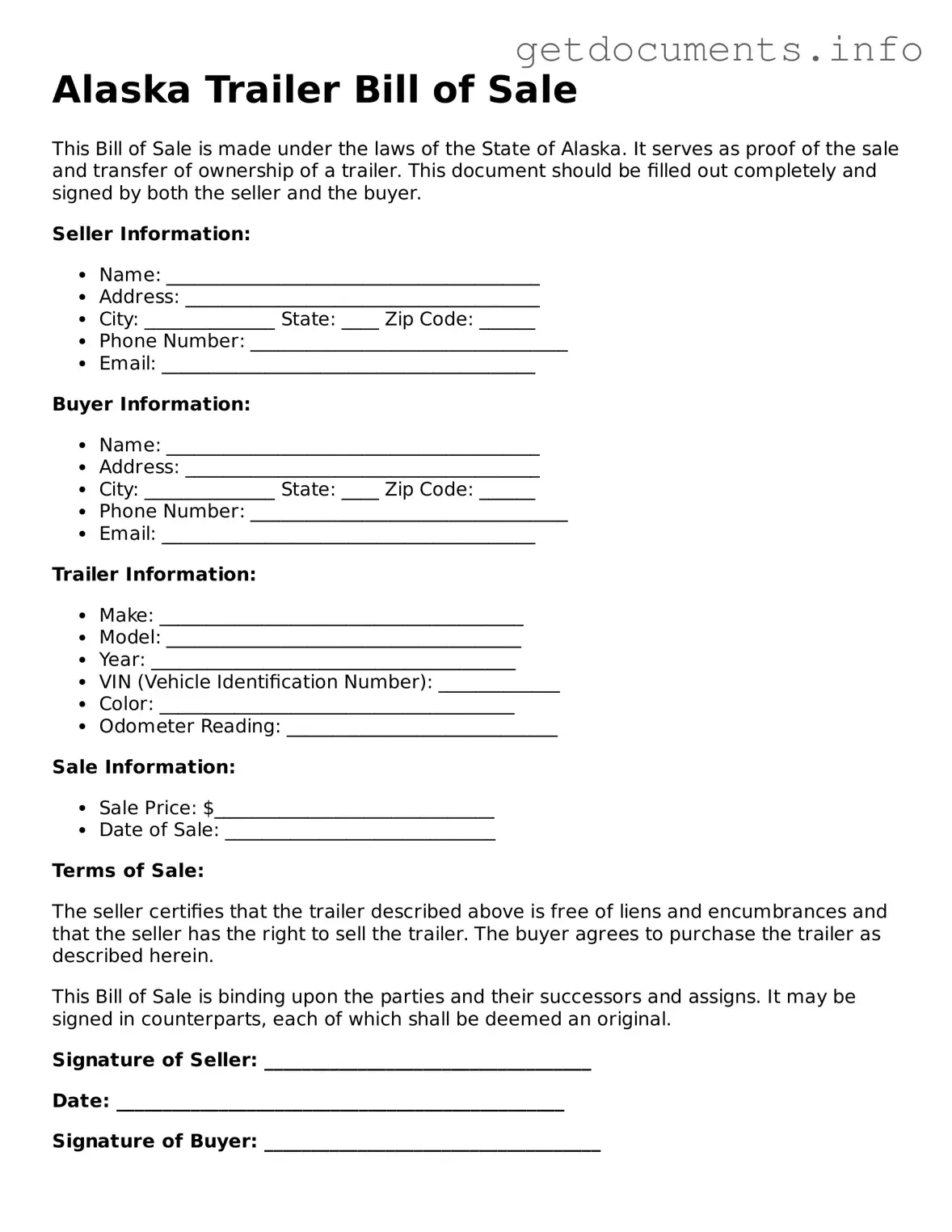Free Trailer Bill of Sale Template for Alaska
The Alaska Trailer Bill of Sale form is a legal document that records the transfer of ownership of a trailer from one party to another in the state of Alaska. This form ensures that both the seller and the buyer have a clear understanding of the transaction, protecting their rights and interests. If you're ready to complete your trailer sale, fill out the form by clicking the button below.
Access Trailer Bill of Sale Editor
